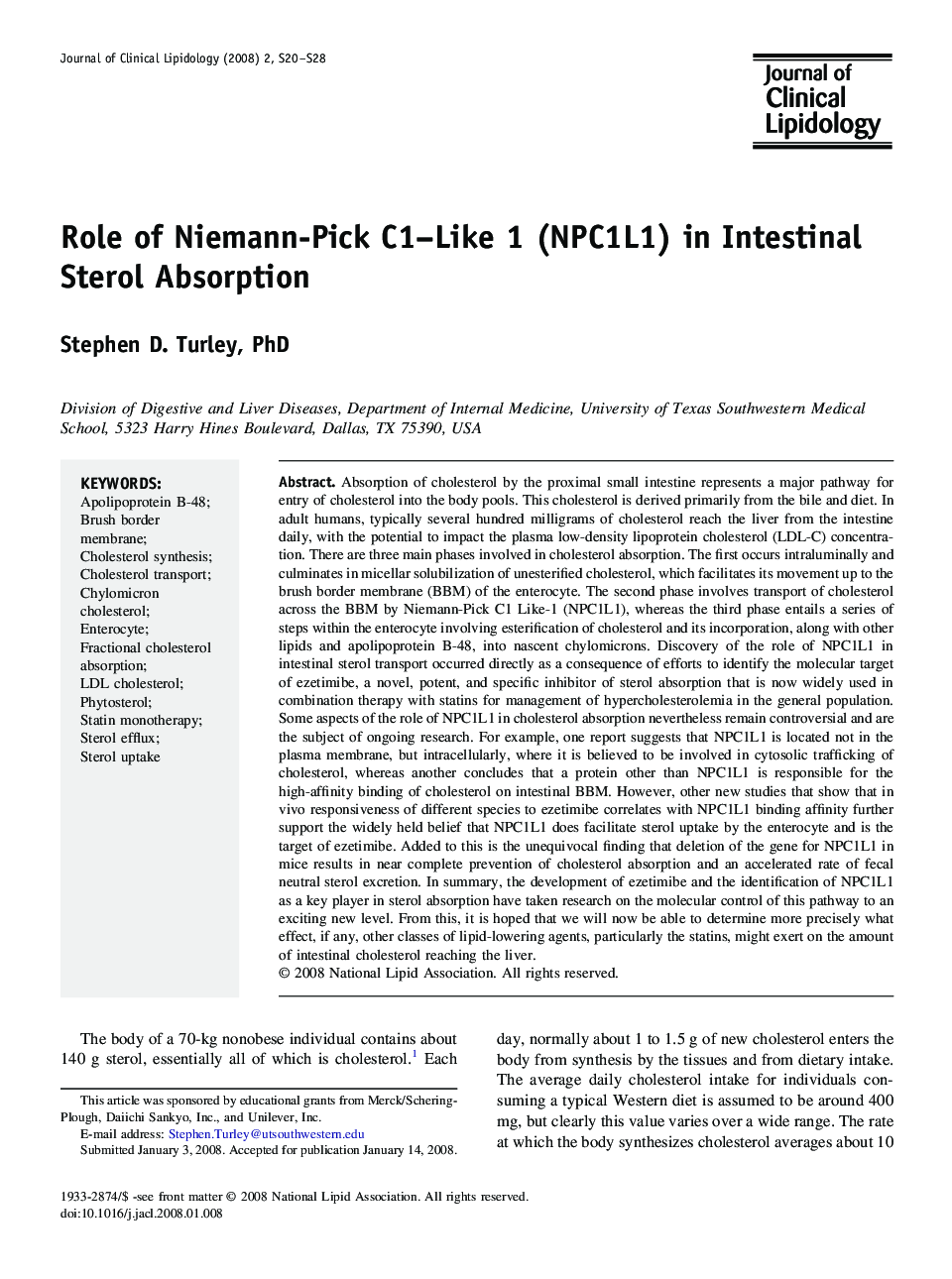| Article ID | Journal | Published Year | Pages | File Type |
|---|---|---|---|---|
| 2966867 | Journal of Clinical Lipidology | 2008 | 9 Pages |
Absorption of cholesterol by the proximal small intestine represents a major pathway for entry of cholesterol into the body pools. This cholesterol is derived primarily from the bile and diet. In adult humans, typically several hundred milligrams of cholesterol reach the liver from the intestine daily, with the potential to impact the plasma low-density lipoprotein cholesterol (LDL-C) concentration. There are three main phases involved in cholesterol absorption. The first occurs intraluminally and culminates in micellar solubilization of unesterified cholesterol, which facilitates its movement up to the brush border membrane (BBM) of the enterocyte. The second phase involves transport of cholesterol across the BBM by Niemann-Pick C1 Like-1 (NPC1L1), whereas the third phase entails a series of steps within the enterocyte involving esterification of cholesterol and its incorporation, along with other lipids and apolipoprotein B-48, into nascent chylomicrons. Discovery of the role of NPC1L1 in intestinal sterol transport occurred directly as a consequence of efforts to identify the molecular target of ezetimibe, a novel, potent, and specific inhibitor of sterol absorption that is now widely used in combination therapy with statins for management of hypercholesterolemia in the general population. Some aspects of the role of NPC1L1 in cholesterol absorption nevertheless remain controversial and are the subject of ongoing research. For example, one report suggests that NPC1L1 is located not in the plasma membrane, but intracellularly, where it is believed to be involved in cytosolic trafficking of cholesterol, whereas another concludes that a protein other than NPC1L1 is responsible for the high-affinity binding of cholesterol on intestinal BBM. However, other new studies that show that in vivo responsiveness of different species to ezetimibe correlates with NPC1L1 binding affinity further support the widely held belief that NPC1L1 does facilitate sterol uptake by the enterocyte and is the target of ezetimibe. Added to this is the unequivocal finding that deletion of the gene for NPC1L1 in mice results in near complete prevention of cholesterol absorption and an accelerated rate of fecal neutral sterol excretion. In summary, the development of ezetimibe and the identification of NPC1L1 as a key player in sterol absorption have taken research on the molecular control of this pathway to an exciting new level. From this, it is hoped that we will now be able to determine more precisely what effect, if any, other classes of lipid-lowering agents, particularly the statins, might exert on the amount of intestinal cholesterol reaching the liver.
